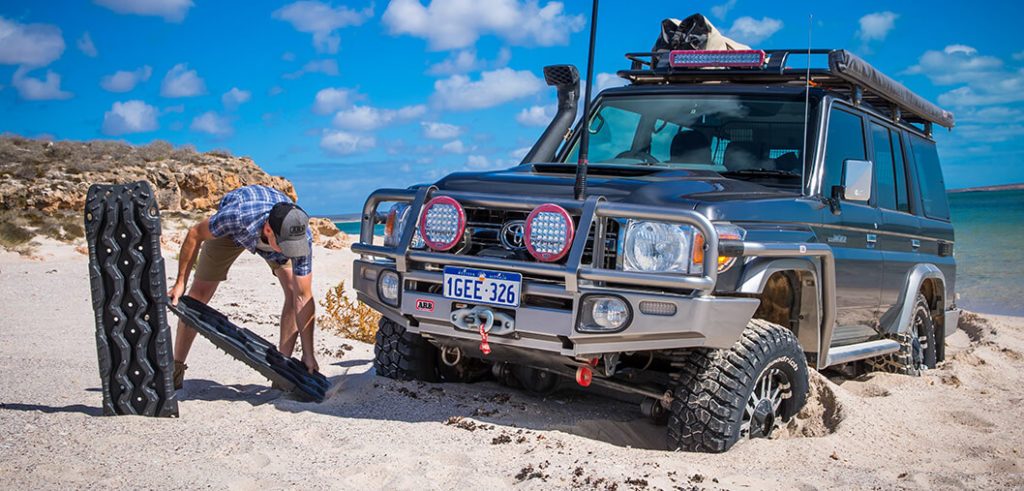No matter how careful or experienced of an off-road driver you are, getting your vehicle stuck off the beaten trail can happen to everyone. That being said, the best thing you can do is equip yourself with the right pieces of recovery equipment. Recovery equipment will help you get out of mud, sand and snow with minimum hassle. It’s typically advised that you have at least two pieces of recovery equipment, simply because it’s relatively inexpensive. You know what they say – it’s better to be safe than sorry.
The two most affordable, yet reliable pieces of recovery equipment are the winch and recovery tracks. You can find them in 4×4 accessories stores online relatively easy. One of them is a simple, yet effective solution, while the other one is more advanced and even more effective. If you’re new to these 4×4 accessories and want to know more about them, keep reading, we’ll discuss them in more detail.

Recovery Tracks
Recovery tracks are typically made of molded plastics that provide friction for your wheels so that your vehicle can gain momentum. There are many people who use a carpet or cardboard, and while they may help them get unstuck, they’re simply not a reliable solution for the serious off-rider. Recovery tracks won’t sink or slide under your tyres, and you can also use them as shovels. They’re incredibly portable, and most models can be folded and nested into one another, so they take up very little storage space in your vehicle. All of this, plus the fact that they’re quite affordable makes them the ideal recovery solution for every off-road driver.
Recovery Winches
Recovery winches are the go-to recovery tool for serious off-road enthusiasts who venture into areas where the likelihood of getting stuck is pretty high. These mechanical pieces of equipment are arguably the most reliable recovery tool. Generally, you want a winch that has at least 50% more pulling power than the weight of your vehicle. You can attach the winch’s cable to a nearby object (provided that your line is long enough to reach it) or another vehicle. When attaching the cable to another vehicle, ensure it’s done properly, i.e to the recovery point of the frame. Avoid attaching it to bumpers, as they can break when put under pressure, and they’ll fly right into your windshield and pose a great hazard.
If neither of the above-mentioned recovery options are to your liking, that’s perfectly fine – you may prefer using a hi-lift jack. Bottom line is, you should always have a solution when you’re stuck in the middle of nowhere, and you should definitely prefer having more options than none.



















